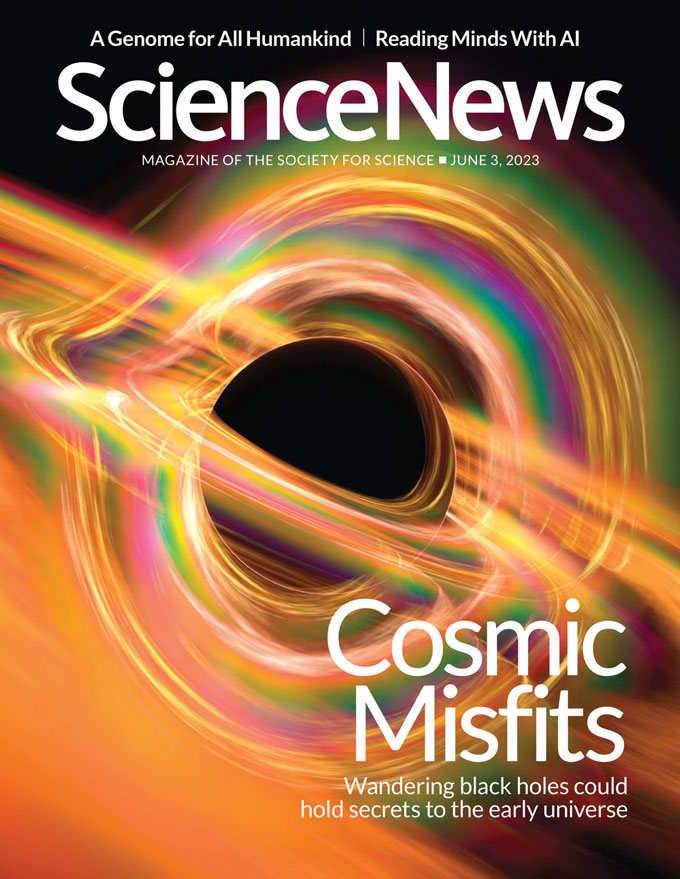A study of fragments from a Martian meteorite shows that the common practice of using magnets to identify meteorites can overwrite records of magnetic fields stored within the space rocks, Katherine Kornei reported in “Searching for meteorites? Ditch the magnets” (SN: 6/3/23, p. 5).
Scientists can determine a meteorite’s origins by looking at the space rock’s chemical makeup, Kornei says. As rocks form, tiny air bubbles often get trapped within them. Those air pockets sometimes chemically look nothing like Earth’s atmosphere. For example, the chemical composition of the air pockets in the meteorite fragments used in this study was a great match for Mars’ atmosphere. That’s good evidence that the rocks originally formed on Mars, Kornei says.
Prahl also wondered whether the magnetic field records of the Martian meteorite could have been wiped instead by Earth’s magnetic field as the rock entered the atmosphere.
Earth’s magnetic field does rearrange the spins of electrons in a meteorite. But only a small fraction of those electrons are typically affected, Kornei says. That’s because Earth’s magnetic field is relatively weak. Magnets, however, typically produce much stronger magnetic fields that can rearrange the spins of most of the electrons within a meteorite. By studying a meteorite’s magnetic properties, researchers can tell the difference between a meteorite that’s simply been sitting on Earth’s surface and one that’s been exposed to a magnet, Kornei says.
2023-07-09 06:15:00
Original from www.sciencenews.org
rnrn
